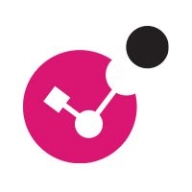

Microsoft Defender for Cloud Apps and Check Point Security Management compete in the realm of cybersecurity, offering solutions tailored for different security needs. Microsoft Defender appears to have an upper hand in seamless integration within the Microsoft ecosystem, whereas Check Point is strong in providing centralized management and advanced threat protection.
Features: Microsoft Defender for Cloud Apps includes real-time graphical data integration, identity security, and threat detection capabilities, making it ideal for the Microsoft ecosystem. Its strong integration with third-party applications enhances its utility. Check Point Security Management offers centralized management with identity awareness and firewalls, advanced threat protection, and robust log collection, which provides a comprehensive approach to network security.
Room for Improvement: Microsoft Defender for Cloud Apps needs improved macOS integration, better third-party integration, and enhanced OCR capabilities. Improved reporting features and reducing false positives could further enhance user experience. Check Point Security Management could benefit from better hybrid cloud integration and a more dynamic license management system. Enhancing the management console's performance and support services responsiveness is also crucial.
Ease of Deployment and Customer Service: Microsoft Defender for Cloud Apps is easily deployed in cloud environments, leveraging Microsoft's infrastructure, with support quality varying by service tier. Premier support is generally rated higher. Check Point Security Management excels in on-premises deployment, offering a unified management system. Both solutions recommend advanced support services for complex issues, but Check Point has noted room for responsiveness improvement.
Pricing and ROI: Microsoft Defender for Cloud Apps is often economically included within the Microsoft 365 E5 bundle, providing affordability for those using Microsoft’s suite. The standalone price is high, but the integration and security features contribute significantly to ROI. Check Point Security Management has higher initial costs, justified by its extensive feature set and comprehensive licensing options, potentially yielding long-term cost savings and making it a good investment despite its price point.
I have seen a strong ROI from using Check Point Security Management through unified policy management, reduced misconfigurations, and faster incident response.
The time to resolve issues is very much better now with Check Point Security Management.
I have seen a hundred percent return on investment with Check Point Security Management.
The biggest return on investment so far has been visibility, knowing what we have in our environment.
As a small team, Microsoft Defender for Cloud Apps allowed us to manage systems with just one or two people.
We have at least saved the costs we had from the Netskope solution this year.
We have partner support that helps us mitigate vulnerabilities reported by our infrastructure team.
The challenge was with drivers due to the size, and we had not provisioned the partition to the right size.
The customer support for Check Point Security Management is great.
Their customer service is pretty good, but it's frustrating to go through three or four channels before reaching the right person.
The support is excellent, and the speed of response is commendable.
There were instances where the engineers were knowledgeable and helpful, but at other times it felt like a ping pong game, with unnecessary transfers until the right person was found.
It can be a multi-domain Security Management server and can manage large or segmented environments with multiple domains or customers.
When you upgrade multiple times, you leave many files that are useless. They are dated, so it's always better to create a new machine every few versions, for example, three or four major versions.
Check Point Security Management's scalability is exceptional as it handles growth in users or devices very well.
For what I know about the log collector and how much data it can take in, it is super scalable and capable of handling high workloads.
Microsoft Defender for Cloud Apps is very scalable, provided you have the right subscription.
In my experience, Microsoft Defender for Cloud Apps is good enough for small to medium businesses.
Check Point Security Management is really stable, and I have not experienced any downtime or issues with reliability except for when we do upgrades.
The SmartConsole used to administrate the security management is somewhat unstable.
I would rate it a ten because I have not experienced any stability issues so far with Defender for Cloud Apps.
I would assess the stability and reliability of Microsoft Defender for Cloud Apps as stable
My impression on the stability and reliability of Microsoft Defender for Cloud Apps is that it is very stable.
When the logs are too heavy for the security management server, the CPU spike will be high, causing our management day-to-day activity to lag or become difficult.
I believe they can improve the management by allowing better API functionality because the API now is a little complicated, making it difficult to do automation.
Additionally, it crashes pretty regularly, so they could resolve the stability issues as well.
For data loss prevention, it would be useful to be able to drill down into the kind of data being transferred over CloudApp.
Defender typically connects to Entra ID, but we have local users on the cloud for database access, SSH, or RDS, and there is nothing produced by Defender regarding those local IAM users.
A significant improvement I would like to see is the integration into a single pane of glass.
Since we are using it extensively, we get significant discounts during procurement.
Licensing is quite expensive.
We pay on a three-year base.
The pricing for Microsoft Defender for Cloud Apps is acceptable.
My organization is currently revisiting pricing, but previously, the cost was a bit expensive, yet comparable to other solutions with similar functionalities and features.
It's not the cheapest, but also not the most expensive, placing it in the mid-level range.
Check Point Security Management has positively impacted my organization by providing centralized control, allowing us to manage all security policies and gateways from a single console, reducing complexity and saving time.
Check Point Security Management has helped my team save time, improve security, and reduce manual work significantly.
We can't work without Check Point because it provides the real visibility needed to manage the environment.
The ability to sanction unsanctioned apps using Secure Score benchmarking, included in Cloud, is also beneficial.
Microsoft Defender for Cloud Apps is very comprehensive, providing a complete 360-degree view of applications within an organization.
The most valuable features of Microsoft Defender for Cloud Apps include live, up-to-date information, which provided real-time alerts.
| Product | Market Share (%) |
|---|---|
| Check Point Security Management | 0.7% |
| Microsoft Defender for Cloud Apps | 1.8% |
| Other | 97.5% |


| Company Size | Count |
|---|---|
| Small Business | 37 |
| Midsize Enterprise | 28 |
| Large Enterprise | 41 |
| Company Size | Count |
|---|---|
| Small Business | 13 |
| Midsize Enterprise | 10 |
| Large Enterprise | 18 |
Check Point Security Management is an advanced security management platform for enterprises. The platform integrates all aspects of security. A single platform manages the entire infrastructure, from data centers to private/public cloud deployments.
Check Point Security Management is a reliable and easy-to-use security platform. It integrates all aspects of your security environment to strengthen the security posture without impairing productivity. The system has a layered policy model. This means the security policy can be separated into layers for network segmentation. Different administrators can manage different policies. The policy layer automates the tasks.
The platform is extensible, scalable, and integrates easily with orchestration systems and change management.
Basic Components of the Infrastructure
The smart console offers several advantages. Changes in security policies and logs can be done with a click. You can navigate from an item within a log to the policy. There are also built-in multi-language support and accessibility features.
1. Security Management Server: The server manages security gateways with set security policies and monitors security events on the network.
The automation server is an integrated part of the management server. The API server is active by default on servers with 4 GB of RAM or more and on standalone servers with 8 or more GB of RAM.
The automation server communicates with the management server the same way as the Smart Console. This architecture allows the same validation errors and warnings to be presented when using an automation session.
The same audit logs generated using the Smart Console are also generated using an automation session. If you have a multi-domain environment, there is only one automation server that monitors all the IP addresses of the multi-domain management server.
2. Security Gateway is placed at the edge of the network. It monitors and filters traffic and enforces security policies.
Logging, Event management, and Monitoring
With Check Point Security Management, logging, reporting, event management, and monitoring are integrated. The platform features widgets and chart templates that optimize visibility. One of the best features is the one-click exploration. This simplifies going from a general overview to specific event details.
Benefits of Check Point Security Management
The unified console also means a single policy for users, data, applications, and networks. The granularity control helps accelerate administration processes. This feature, together with automation, is key to achieving reduced operational overhead. Security teams can automate tasks and even create self-service security web portals with the Check Point Security Management platform.
Threat management is fully integrated, with reporting, logging, and monitoring all in one dashboard. This provides full visibility into the security of the network.
Security Management Suite
The Security Management Suite consists of the following modules:
Reviews from Real Users
A Network Security Engineer/Architect at a tech services company says, "The features we like and find the most valuable are the ways we can manage the policy, create objects, and drag and drop objects in our daily operation. It makes our daily operation on the firewall management much easier than going, for example, to one firewall, then going to the other."
"The management API is the best new feature for me. It allows us to further automate our customers' automated server ordering," says a System Engineer Network & Security at OTTO GmbH & Co KG.
A Senior Infrastructure Services Specialist at St.George Bank Limited adds that "The solution is ideal for use and deployment in a large infrastructure environment."
Microsoft Defender for Cloud Apps is a comprehensive security solution that provides protection for cloud-based applications and services. It offers real-time threat detection and response, as well as advanced analytics and reporting capabilities. With Defender for Cloud Apps, organizations can ensure the security of their cloud environments and safeguard against cyber threats. Whether you're running SaaS applications, IaaS workloads, or PaaS services, Microsoft Defender for Cloud Apps can help you secure your cloud environment and protect your business from cyber threats.
Reviews from Real Users
Ram-Krish, Cloud Security & Governance at a financial services firm, says that Microsoft Defender for Cloud Apps "Integrates well and helps us in protecting sensitive information, but takes time to scan and apply the policies and cannot detect everything we need".
PeerSpot user, Senior Cloud & Security Consultant at a tech services, writes that Microsoft Defender for Cloud Apps "Great for monitoring user activity and protecting data while integrating well with other applications".
Simon Burgess,Infrastructure Engineer at SBITSC, states that Microsoft Defender for Cloud Apps is "A fluid, intelligent product for great visibility, centralized management, and increased uptime".
We monitor all Advanced Threat Protection (ATP) reviews to prevent fraudulent reviews and keep review quality high. We do not post reviews by company employees or direct competitors. We validate each review for authenticity via cross-reference with LinkedIn, and personal follow-up with the reviewer when necessary.